The Barnard 5 complex of gas is in the process of becoming a multiple-star system. B5 is a molecular cloud located in the constellation Perseus, approximately 800 light-years away. It contains one young protostar and three dense condensations that astronomers say will collapse into stars in the astronomically-short period of 40,000 years. Astronomers discovered that filaments of gas in the cloud are fragmenting, and the fragments are beginning to form into additional stars that will become a multiple-star system.
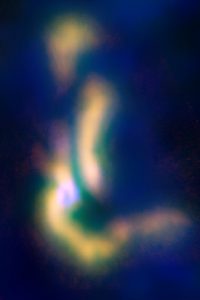
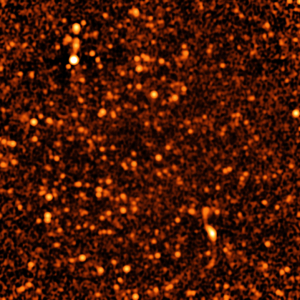
VLA Deep Field
Staring at a small patch of sky for more than 50 hours with the ultra-sensitive Karl G. Jansky Very Large Array (VLA), astronomers have for the first time identified discrete sources that account for nearly all the radio waves coming from distant galaxies. They found that about 63 percent of the background radio emission comes from galaxies with gorging black holes at their cores and the remaining 37 percent comes from galaxies that are rapidly forming stars. About 2,000 discrete objects are identified in this VLA image of the distant Universe. This entire image constitutes only about one-millionth of the entire sky.
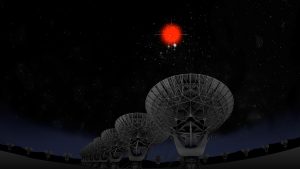
Precise Location, Distance Provide Breakthrough in Study of Fast Radio Bursts
In January 2017, for the first time, astronomers pinpointed the location in the sky of a Fast Radio Burst (FRB), allowing them to determine the distance and home galaxy of one of these mysterious pulses of radio waves. The new information rules out several suggested explanations for the source of FRBs.
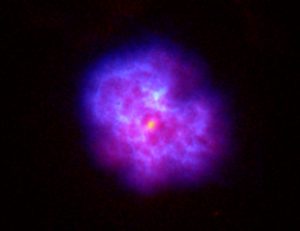
Pulsar Wind Nebula
This beautiful cloud of gas exploded outward when the star in its center went supernova and turned into a pulsar. The sliced-apple appearance of the expanding cloud is caused by the pulsar pushing the gas outward in bulges.
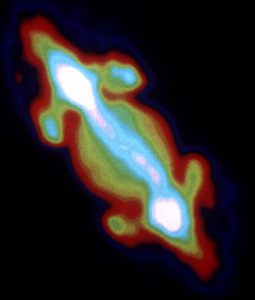
Jupiter in Radio Waves
Looking like a giant salamander, this false color image of Jupiter shows the radio wave brightness coming from around our Solar System’s largest planet. The shape is caused by charged particles erupted off of its volcanic moon, Io, barreling along Jupiter’s gigantic magnetic field. The data were taken by the Very Large Array (VLA).
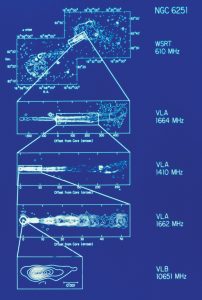
Zooming into a Black Hole
This collection of data from a powerful radio galaxy known as NGC 6251 shows the increase in detail astronomers get when they use the Very Large Array and the Very Long Baseline Array. The VLA sees the blobbiness along the jet of material shooting out of a supermassive black hole. The VLBA can see down into the area right around that black hole.





